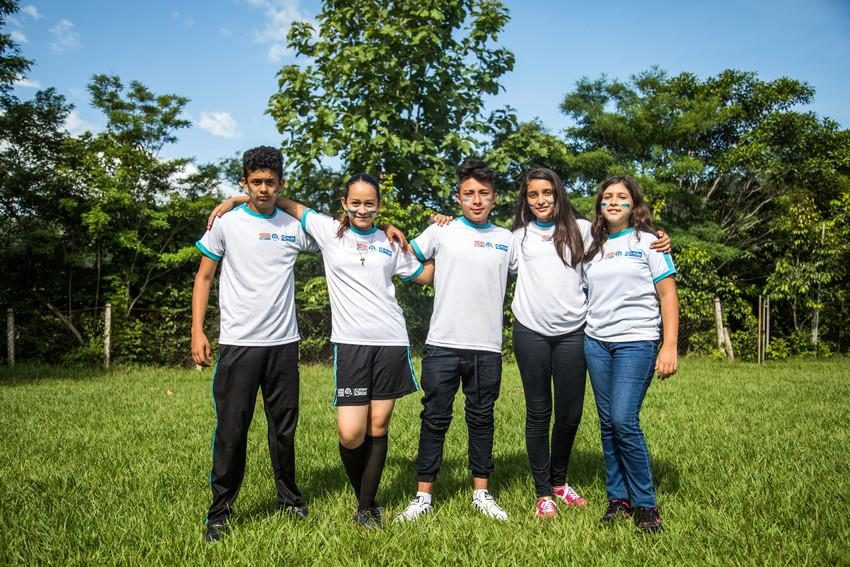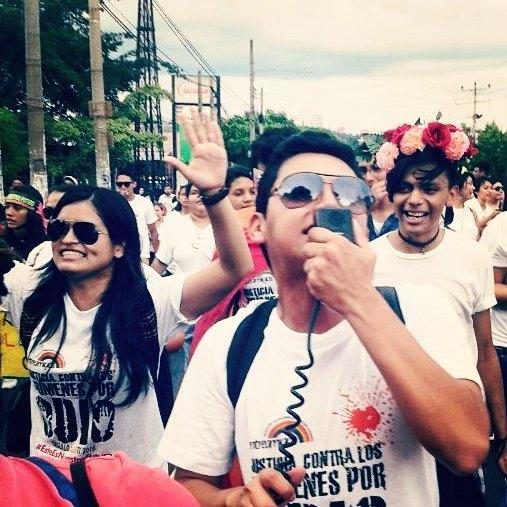Solidarity and understanding of intersectionality are essential to achieving our shared objectives, blogs gender equality and LGBTIQ+ campaigner Gonzalo, 24.

Men have responded to the feminist movement in very different ways, some supportive, some antagonistic. However, feminists too have at times taken a hard line, separatist stance, seeing the challenge of achieving gender equality as resting exclusively with women, ignoring the issue of men and their socialisation within the patriarchal system.
Thankfully, this is changing. Most gender equality advocates now realise that solidarity and an understanding of intersectionality are essential to achieving our shared objectives. But there are other steps I’d like to share with men, boys and non-binary people who support gender equality to help take the movement forward.
1. Acknowledge male privilege
Men must begin by acknowledging the privileges we have been born into as a result of the patriarchy – the system of society and government in which men hold the power and women are largely excluded from it. The patriarchal system has historically placed the masculine at the centre of the universe, favouring men and excluding women.
Often men are not aware of this system because we have always enjoyed these privileges. This system has marked relations and forged unequal power between the genders. This is clear in most countries in the political, economic, cultural and social spheres, and is a regressive system that must be challenged.
2. Show solidarity
Although raising awareness of male privilege and acknowledging that girls and women face discrimination shows progress, this alone will not stop the perpetuation of those forms of oppression.
It is necessary to stand with women and girls in their daily struggles for the eradication of patriarchal, sexist, and misogynist constructs so they may have access to equal freedom, equal respect and equal power.

3. Understand that the causes of gender inequality are universal
The pursuit of gender equality in my home country, El Salvador, is unlikely to take the same route as it will in Pakistan, or the UK. Context is important, but the root causes of discrimination and inequality are the same – unfair gender roles, normalised abuse and harassment, and a tendency to undermine women in order to exert control over them. To illustrate, Plan International’s research – Unsafe in the City – sheds light on the universality of harassment and abuse in the world’s cities, from Stockholm to Cairo. To tackle issues of this scale – gender-based violence has been described as epidemic in proportions worldwide – girls and women will need male allies.
Girls everywhere are undervalued, undermined and underestimated. It’s time to tackle inequality at its root.
4. Challenge negative masculinities
In its most extreme form, negative or ‘toxic’ masculinity is discrimination, subjugation or violence towards the feminine. In El Salvador, we often see a toxic masculinity in the form of social violence that manifests itself in the street, at home, at work, in schools and in public spaces. This has led to high levels of femicide and murder of individuals because of their sexual orientation, gender identity or expression.
Negative masculinity can also encompass pressure to display ability and not make mistakes. Fulfilling this social role leads men to high levels of stress and conversely, an accumulation of emotions. Such ‘macho’ attitudes affect men’s health and their interpersonal relationships. In short, these masculinities serve no-one.
5. Have an intersectional lens
Intersectionality has become fundamental within the social justice movement to work towards a shared vision of progress.
Intersectionality has become fundamental within the social justice movement to work towards a shared vision of progress.
The pursuit of gender equality must include social progress for other groups in society that have less power. This includes, but isn’t limited to those with disabilities, minority or indigenous groups and the LGBTIQ+ community.
6. Help transform power dynamics
Men often fear that the empowerment of girls and women will mean losing out but equality benefits us all. For example, distribution of care and domestic tasks in the home encourages more satisfying and happy relationships. In the labour force, greater equality leads to better levels of production and satisfaction.
Simply not displaying male superiority is not enough. We must be allies against all forms of discrimination and abuse, and we must help create a new type of man by addressing men’s fear and resistance. We can also become positive role models for other men, to show that caring for ourselves and the wellbeing of others is not just a feminine trait.
7. Share your platform: support girls in taking the lead
Unfortunately, men under patriarchy have tended to massively underestimate girls’ and women’s power to create change and to benefit the whole community. Therefore, it is our role, as progressive boys and men, to share those spaces that patriarchy has granted us and promote girls’ and women’s leadership.
Gender equality is not only a fundamental human right, but the necessary foundation to achieve a peaceful, thriving and sustainable world. Fighting together for equality and justice is the only way to build an equal society.